Top 10 MathematicianMathematics is the language of the universe; from decimals to powers, and all contemporary terms such as rules, formulas, postulates, theorems, identities etc. Anyone can be a mathematician, from a preschool maths teacher to a physicist or scholar. Mathematicians are concerned with solving mathematical problems. Here are the top 10 greatest Mathematician of all time and their contribution to the mathematics world. 1. Srinivasa Ramanujan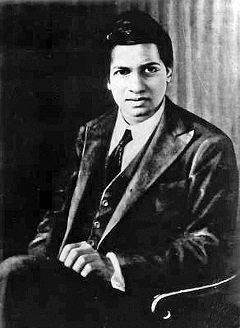
He was born in Erode, Mysore state of British India, 1887-1920. He was an Indian mathematician who profoundly had no professional training in pure mathematics, though he was known to be "the man who knows infinity". Full name: Srinivasa Ramanujan Iyengar. Education: Government Arts College, Pachaiyappa's college, Trinity College Cambridge. Throughout his short life, he compiled most of the identities and equations. Many were complete, and many had unconventional results. Prior to this, he was well-known for the following things: sum, the Landau-Ramanujan constant, fake theta functions, the Ramanujan conjecture, the Sato series, and the asymptotic formula. Of his thousands of results, a dozen or two are now proven correct. He tried to work extraordinarily with the English Mathematician G.H. Hardy in England and produced new theorems having highly advanced results. His most well-known thesis is "highly composite numbers" 1916. His general and notebook, the Ramanujan General, was established in every area of mathematics and is been analysed and studied till today. Some selected papers of the Genius were:
2. Pythagoras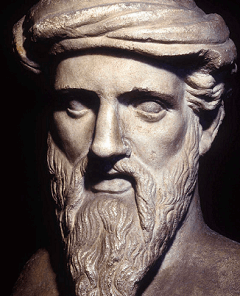
He is an ancient Greek Mathematician known to be born between 570-495 BC. He was the founder of Pythagoreanism. He developed the numerological teachings, which is been debited by many scholars. He was credited with many scientific and mathematical discoveries the one very commonly known to all is "The pythagorean theorem", Pythagorean tuning, Theory of proportions. Many say that he was the first man who called himself a philosopher. Even though Pythagoras was related to mathematics to some extent but he actually contributed to mathematics or natural philosophy. Although the exact details of his teachings are uncertain, according to Aristotle, Pythagoras used mathematics for a mystical reason rather than practical application. His only profound discovery or theory to be proven written in mathematics was the Pythagoras theorem, which is being widely used. Years before Pythagoras, the Babylonians and Indians were aware of and applied the Pythagorean theorem. But one might argue that it was the first to bring it to the Greeks. Numerous biographers of Pythagoras claim that he was also the first to recognise the five regular solids and to establish the idea of proportions. 3. Carl Friedrich Gauss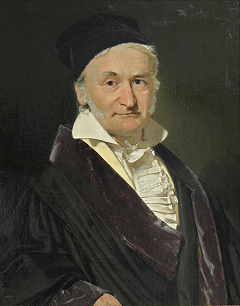
Full name Johann Friedrich Carl Gauss, born on 30 April 1777 and died on 20 February 1855. He was a German Mathematician and physicist. He was referred to as "Princeps mathematicorum" (the four most of mathematicians). He had an exceptional influence and ranking in the histories of popular Mathematicians. He won the Lalande Prize in 1809 and the Copley Medal in 1838. He proves the fundamental theorem of Algebra. He also made an essential contribution to the number theory prescribed in his book "Disquisitiones arithmeticae". He gave a triple bar symbol of congruence and proved the law of quadratic reciprocity. He showed that regular heptadecagon could be constructed straight-edged in 1801. Additionally, he proved many conjecture theorems such as Fermat's polygonal number theorem for n=3, Descartes's rule of science, Kepler conjecture and Fermat's last theorem for n=5. His writings based on or related to mostly mathematical backgrounds were: Dissertation on the fundamental theorem of Algebra- 1799, Disquisitiones arithmeticae -1801, theorematis Arithmetici Demonstratio nova - 1808. 4. Aryabhatta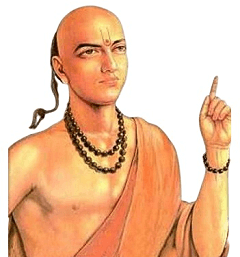
The founder of ZERO - an Indian mathematician born in Patliputra, 476- 550 AD. His main interests were mathematics and astronomy. In the field of Mathematics, he discussed basic topics such as squares and cube roots, geometry and property of mensuration and arithmetic progression. He termed "pi" as an irrational number and calculated its value up to four decimal digits. Aryabhatta was influential on trigonometry, too, through his sine table. Summing up all his contributions to mathematics were:
With mathematics Aryabhatta's work created a great influence on astronomical traditions too. His calculation methods have the base of trigonometry with trigonometric tables and definitions of sine and cosine termed as Jya and kojya. In his honour, India's first satellite was named Aryabhata, and it was also featured on the back side of a 2 rupee note. Two institutes have been established in his name: Aryabhatta Knowledge University (AKU) and Aryabhata research institute of Observational Sciences (Aries) in Bihar and Nainital, respectively. 5. Leonhard Euler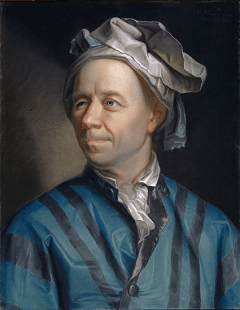
Euler was a Swiss Mathematician, logician engineer, geographer and astronomer. He had made very influential discoveries in various branches of mathematics. Johann Euler, a mathematician, is descended from him. One of the best mathematicians of the eighteenth century, according to legend. Euler's creations, according to Carl Friedrich Gauss, are irreplaceable. The popularisation of the Greek word 'pi' was because of him. Also, he was the first one to give the notation f(x) for functions, and "i" to express imaginary units; he gave the letter for summation i.e. sigma for finite differences and the letter delta?. As said, he worked in all fields of mathematics trigonometry, algebra, lunar theory, and geometry. Euler used power series to solve the Basal problem in 1735, popularly known as Euler's constant. He elaborated enormous ways to express logarithmic functions using power series. His famous writings include the following:
6. Euclid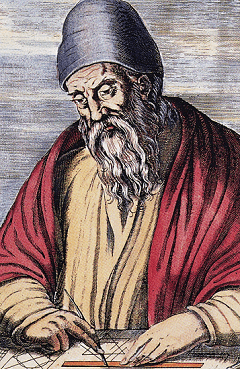
Euclid was an ancient Greek Mathematician who was a geometer and logician. He was popularly known as the 'father of geometry' his system is now referred to as Euclidean geometry, which involves innovations of theories from earlier Greek mathematics, including Hippocrates of chaos, Thales and Theaetetus. His famous works are the elements, optics, and data. The birth of Euclid is unknown, but it is estimated around 300 or 325 BC. There are a few works which were lost, including -The conics, The Pseudaria, The Porisms and The Surface Loci. Euclid first introduced the theorems from a limited number of axioms in the elements. He also published extensively on number theory, mathematical rigour, spherical geometry, conic sections, and viewpoint. He gave his context on an early central text in the optics field, and lesser-known works, including data and Phenomena. 7. Brahmagupta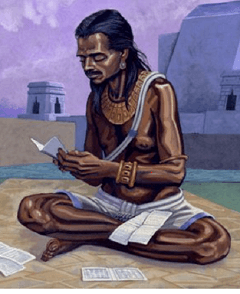
Brahmagupta was a well-known Indian mathematician and astronomer. He wrote two well-known books: the Brahmasphutasiddhanta, and the Khandakhadyaka . He was born in c.598 and died in c.668 CE. His well-known works include:
He was influenced by subsequent mathematics, particularly Indian and Islamic mathematics. Rules of zero were given by Brahmagupta, and the text was in elliptic words in Sanskrit as he did not provide any proof, so it was not known how Brahmagupta's results were derived. In 1628 CE, Brahmagupta was the first one to describe gravity as an attractive force, and he used the Sanskrit term 'grutvakarshaam'. Brahmagupta's mathematical advances were carried further by Bhaskara, who was a descendant of Ujjain. After the death of Brahmagupta, Sindh came under the Arab califate in 700CE. The science historian George Saturn called Brahmagupta "one of the greatest scientists of his race and kind". Further, Brahmagupta also gave the solutions to linear equations in his famous book brahmasphutasiddhanta in chapter 18th. He further gave two equivalent solutions in general quadratic equations. He also gave the formula for a cyclic quadrilateral. He provided the formula that was used for forming the Pythagorean triplet. A major portion of his work was dedicated to the field of geometry. One of the theorems includes which gives the length of a segment and triangle basis divided by altitude. He also presented a sin table. His contributions towards astronomy are Ephemerides, conjunctions, and Solar Eclipses. 8. Satyendra Nath Bose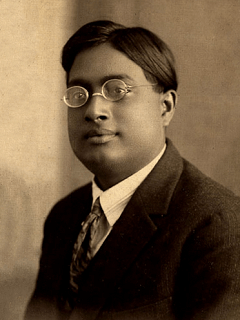
Bose was an Indian mathematician and physicist, have specialised in theoretical physics. He was known for his work on quantum mechanics in the 1920s, and he was awarded India's second-highest civilian award, the ' Padma Bhushan award, in 1954 by the Indian government. He was born in Calcutta, Bengal, on 1 January 1894 and died on 4 February 1974. His spouse was Ushabati Bose. The Bose-Einstein condensate, Bose-Einstein statistics, Bose-Einstein distribution, Bose-Einstein correlations, Bose gas, Boson, and photon gas, ideal Bose equation of state, and bosonic string theory are among his most well-known contributions. He received his education at Visva-Bharati, the University of Dhaka, and the University of Calcutta. His achievements are Bachelor of Science in mixed mathematics for the first position in 1913; he was ranked first in his masters in 1915. He spoke Sanskrit, Bengali, English, French, and numerous other languages fluently. Additionally, he enjoyed playing musical instruments like the esraj. Planck's quantum radiation law was derived by him, although. 9. Bhaskara ||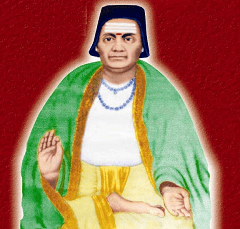
He was popularly known as Bhaskaracharya, and to avoid confusion with Bhaskara one, he was called Bhaskara II. He is one of the most well-known mathematicians, astronomers and geometers. His main field of interest is Algebra, Arithmetic and Trigonometry. He was born in 1114 in Vijjadavida and died in 1185. He was the only mathematician of his time who was immortalised on a monument. His notable works are "Siddhanta Shiromani" that is divided into different sections: the first section, "Lilavati", covers the calculations, progressions, permutations and measurement. The second section "Bijaganita", carries information about zero, positive and negative numbers, infinity and indeterminate equations, including Pell's equation. The third section, "Grahaganita" which consisted of 451 verses tells about the motion of planets. 10. Bernhard Riemann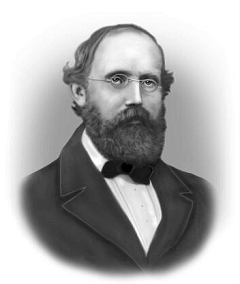
Bernhard was a German Mathematician who is known for his contribution to analytic number theory, differential geometry, the Riemann integral, and his work on the Fourier series. He was born on 17 September 1826 at Breselenz, Kingdom of Hanover and died on 20 July 1866. His scientific career was in the field of Mathematics and Physics. Some of Riemann's works involve complicated analyses in the subject of geometry using Riemann surfaces and multi-valued functions like the logarithm or the square root.
Next TopicTop 10 Actors in the World
|
 For Videos Join Our Youtube Channel: Join Now
For Videos Join Our Youtube Channel: Join Now
Feedback
- Send your Feedback to [email protected]
Help Others, Please Share









